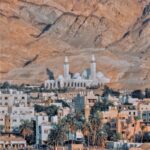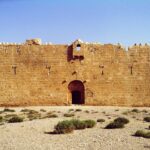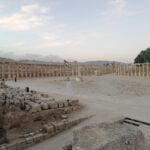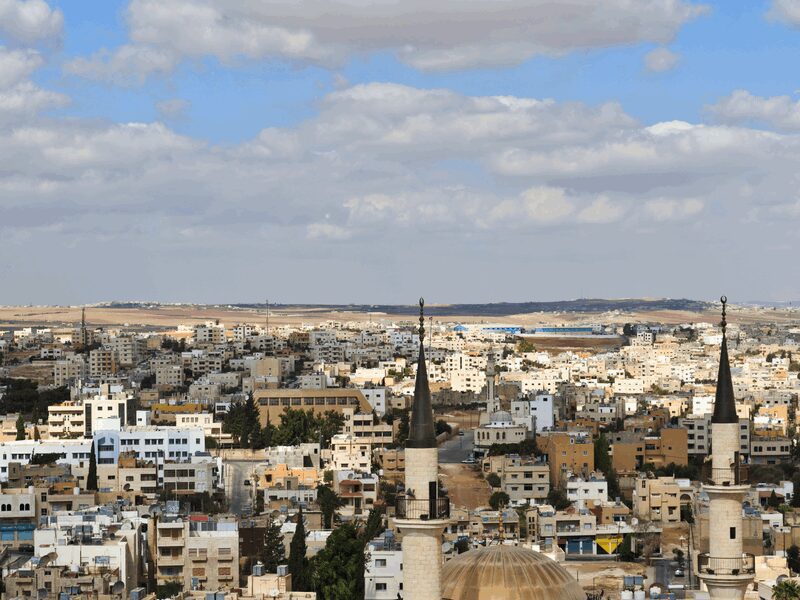
Discovering Madaba: The City of Mosaics
Madaba, known as the “City of Mosaics,” is a fascinating place in Jordan with a rich history and vibrant culture. Famous for its beautiful mosaic art, Madaba gives visitors a special look into the ancient world. This guide will help you understand why Madaba is such a remarkable city.
A Glimpse into History
Ancient Beginnings
Madaba is one of the oldest cities still inhabited today, with history that goes back to the Bronze Age. Over the centuries, different civilizations have influenced the city, including the Moabites, Romans, Byzantines, and early Islamic rulers. Each group has left its mark on Madaba’s buildings and culture.
The Byzantine Era
The Byzantine period was especially important for Madaba. During this time, the city became a major center for Christian art. One of the most famous artifacts from this period is the Madaba Map, a detailed mosaic map of the Holy Land created in the 6th century.
The Madaba Map
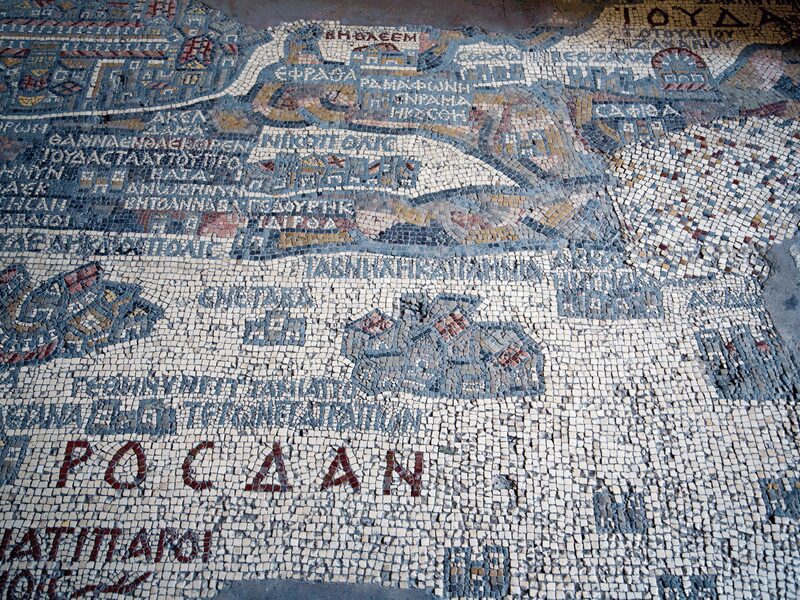
The Madaba Map is a famous mosaic from the Byzantine era, created in the 6th century. You can see it in the Greek Orthodox Basilica of Saint George in Madaba. This map is one of the most important discoveries in Jordan and provides a detailed view of Jerusalem and other key biblical sites. It offers valuable information about the geography and history of the area.
Historical Importance
The Madaba Map is more than just a beautiful piece of art; it’s a key historical document. Archaeologists and historians use it to locate and confirm ancient sites mentioned in the Bible. Its detailed and accurate depiction helps us understand the ancient world better.
Cultural Heritage
Religious Diversity
Madaba is known for its rich religious history. The city has been an important center for both Christian and Islamic culture. You’ll find many churches, mosques, and other religious sites that highlight its diverse spiritual heritage.
Mosaic Art
Madaba truly lives up to its nickname, the “City of Mosaics.” The city features a wide range of mosaic art, from ancient floor mosaics in old churches to modern mosaic creations. Visitors can admire these beautiful artworks throughout the city.
Must-Visit Sites in Madaba
Greek Orthodox Basilica of Saint George
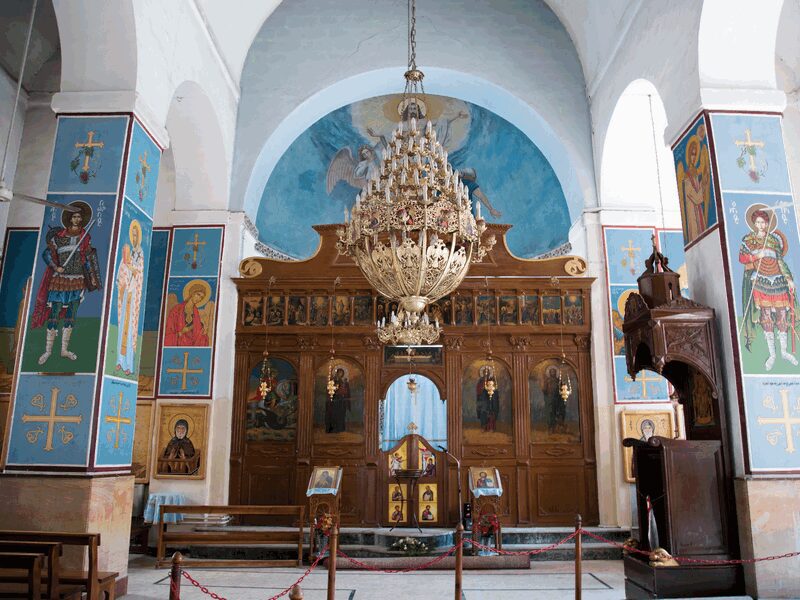
The Greek Orthodox Basilica of Saint George is where you can find the famous Madaba Map. This basilica is also known for its beautiful Byzantine architecture. Inside, you’ll see intricate designs and stunning mosaics that make the church a true architectural gem.
Archaeological Park
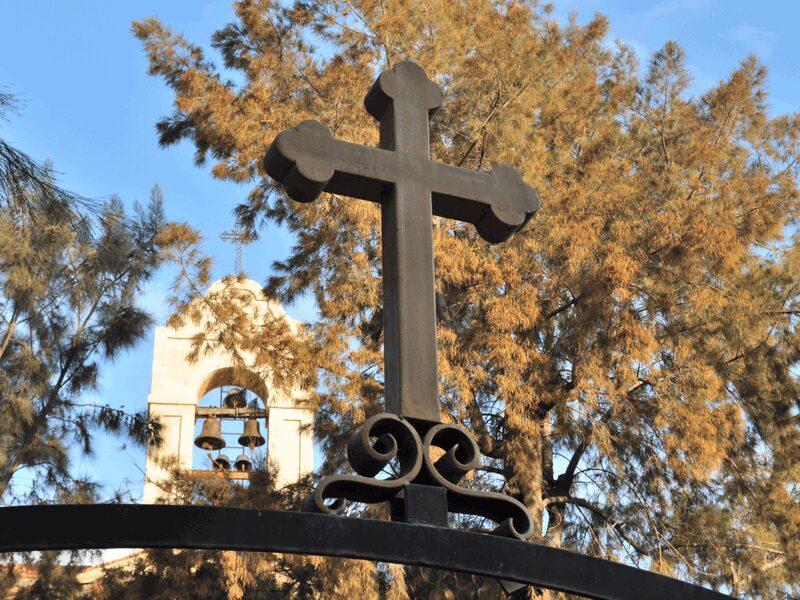
If you’re interested in history, the Madaba Archaeological Park is a great place to visit. The park has ancient ruins and beautiful mosaics. Key sites include the Church of the Virgin Mary and the Hippolytus Hall. These places provide a fascinating look into Madaba’s rich history and cultural heritage.
Church of the Apostles

The Church of the Apostles in Madaba is famous for its amazing mosaics that show different biblical scenes. One of its most notable features is the floor mosaic called the “Personification of the Sea,” which stands out for its detailed design and bright colors.
Madaba Museum
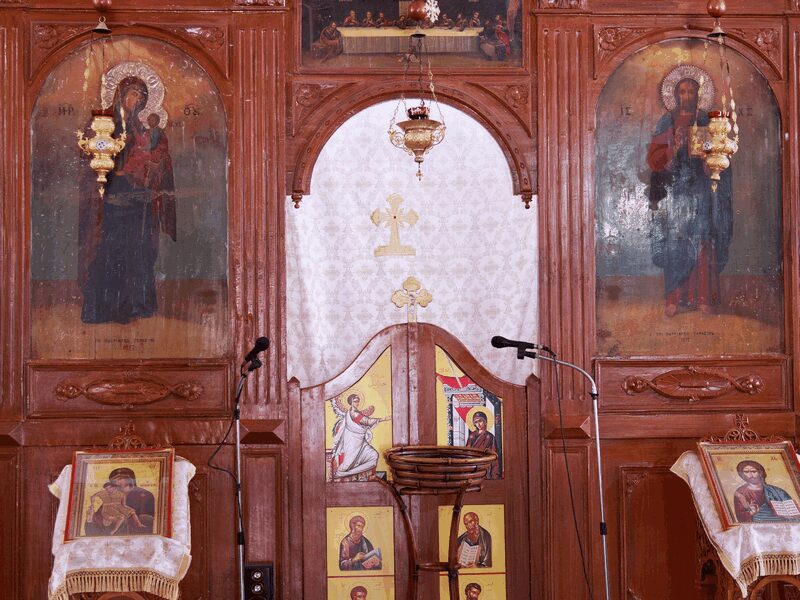
The Madaba Museum features a collection of artifacts that highlight the city’s history and culture. You can see ancient pottery, coins, and other archaeological finds that offer a glimpse into Madaba’s past.
Frequently Asked Questions (FAQs)
What is Madaba famous for?
Madaba is famous for its beautiful mosaic art, especially the Madaba Map, which is a Byzantine mosaic map of the Holy Land. The city is also known for its rich history and cultural heritage.
Where is the Madaba Map located?
The Madaba Map can be found in the Greek Orthodox Basilica of Saint George in Madaba, Jordan.
What is the historical significance of the Madaba Map?
The Madaba Map is an important historical document that shows detailed images of Jerusalem and other key biblical sites. It helps archaeologists and historians locate and confirm ancient places mentioned in the Bible.
What are some must-visit sites in Madaba?
Some must-visit places in Madaba include the Greek Orthodox Basilica of Saint George, the Madaba Archaeological Park, the Church of the Apostles, and the Madaba Museum.
How old is the city of Madaba?
Madaba is one of the oldest continuously inhabited cities in the world, with a history that dates back to the Bronze Age.
Conclusion
Madaba offers a rich blend of history, culture, and stunning mosaics, making it a top destination for anyone interested in Jordan’s ancient heritage. Its diverse religious sites and impressive historical artifacts make it a unique and captivating place to visit. For more details about Madaba and its attractions, consider exploring the city further.

